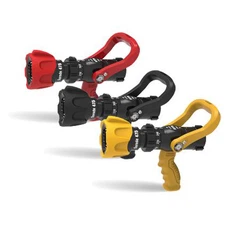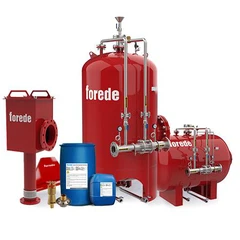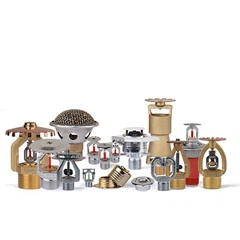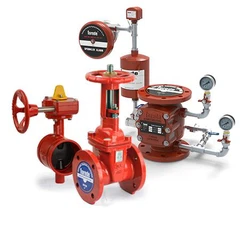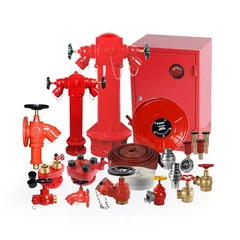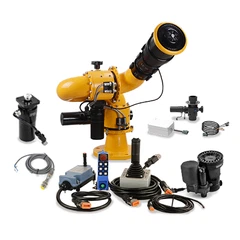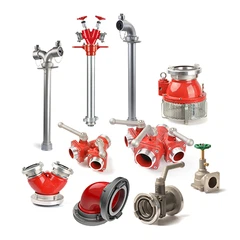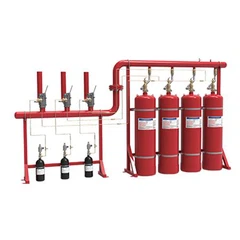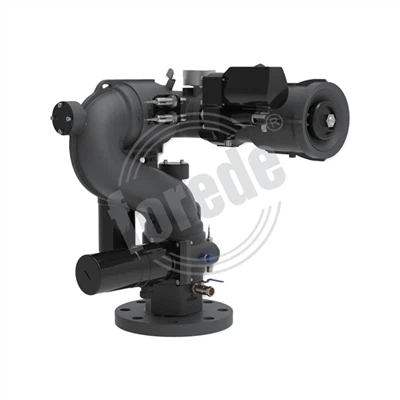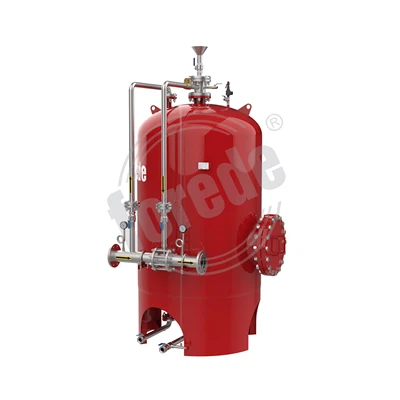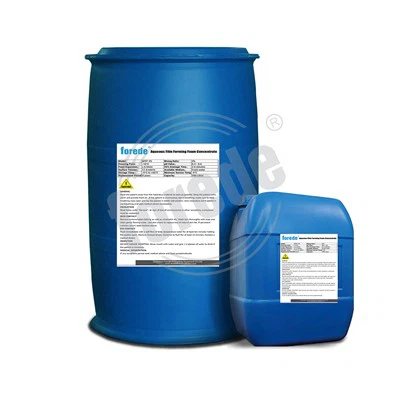What is a Foam-Water Sprinkler?

What is a Foam-Water Sprinkler?
Foam-Water Sprinkler is a specialized fire suppression device installed in a fixed piping system designed to discharge either water or foam solution onto a protected hazard. It functions as the endpoint delivery mechanism within a Foam-Water Sprinkler System. Key aspects:
Dual Discharge Capability: The core feature. The same sprinkler head discharges plain water or premixed foam solution (water + foam concentrate), depending on system activation and hazard type.
Physical Appearance: Often resembles a standard pendant, upright, or sidewall sprinkler head. Critical internal components are compatible with both water and foam solution (corrosion-resistant materials like brass/stainless steel, appropriate K-factors).
System Dependency: Requires an integrated foam proportioning system (bladder tank, pump proportioner, inline eductor) and dedicated concentrate storage. Piping must be compatible with foam (e.g., avoid galvanized steel for some concentrates).
Activation: Primarily heat-activated via fusible link or glass bulb, like conventional sprinklers. System selection (water vs. foam) is typically controlled automatically by detection systems (heat/smoke/flame) or manually based on the fire type.
NFPA Standards: Governed primarily by NFPA 16: Standard for Foam-Water Sprinkler and Foam-Water Spray Systems.
The primary function is to deliver rapid, automatic fire suppression tailored to the hazard by providing two distinct extinguishing agents:
Water Discharge: For Class A (ordinary combustibles) fires. Provides cooling, soaking, and fire control using standard sprinkler hydraulics.
Foam Solution Discharge: For Class B (flammable liquids) fires or combined Class A/B hazards. Delivers foam solution that, upon discharge, aerates into fire-suppressing foam. Key mechanisms:
Smothering: Forms a foam blanket separating fuel from oxygen.
Cooling: Water content absorbs heat.
Vapor Suppression: Prevents release of flammable vapors.
Film Formation (AFFF/FFFFP): Creates aqueous film on hydrocarbons.
Key Purposes: Achieve faster knockdown and control of flammable liquid fires than water alone; Minimize water damage where foam is more efficient; Provide flexible protection for facilities handling mixed hazards; Automate agent selection based on fire type (in advanced systems); Protect against re-ignition.
Foam-Water Sprinklers are ideal for facilities with significant flammable liquid hazards alongside ordinary combustibles:
Aircraft Hangars (NFPA 409): Primary protection for floors under aircraft wings/fuselage where fuel spills are likely. Systems can discharge foam locally on spill fires and water elsewhere.
Warehouses Storing Flammable Liquids: Protecting areas with flammable liquids in containers (drums, totes, bottles) stored on racks or pallets.
Industrial Manufacturing/Processing: Facilities handling oils, solvents, paints, chemicals, or flammable liquids in processes (e.g., paint spray booths, mixing rooms, parts washers).
Power Generation: Turbine enclosures (lubricating oil fires), transformer rooms (if dielectric foam used).
Storage Tanks (Smaller/Indoor): Protection for indoor day tanks or process storage tanks.
Loading Racks & Transfer Areas: Indoors or under canopies where flammable liquids are pumped.
Parking Garages (Special Hazards): Areas designated for fleet vehicles carrying fuels or hazardous materials.
Marine Facilities: Dry docks, repair shops, flammable stores on ships.
System Workflow:
Detection: Fire detected (sprinkler fusible link melts OR separate detection system).
Agent Selection: System controller activates based on detection type/location (e.g., flammable vapor detection triggers foam, heat/smoke triggers water).
Proportioning: If foam selected, proportioning system (bladder tank, balanced pump, eductor) injects concentrate into water main.
Solution Delivery: Premixed foam solution flows through dedicated piping.
Discharge & Aeration: Foam solution discharges through sprinklers. Aerating foam sprinklers may be used, but foam primarily forms upon impact/flowing over the spill.
Water Mode: Water flows directly from main if foam not selected.
Key Advantages:
Dual Hazard Protection: Single system protects against both Class A and Class B fires efficiently.
Faster Flammable Liquid Fire Control: Superior to water-only sprinklers for liquid fuel fires.
Reduced Water Damage: Less water often needed for foam knockdown vs. water control on liquid fires.
Automatic Agent Selection: Ensures optimal agent is applied to the specific fire type detected.
Life Safety Enhancement: Faster control improves occupant escape time and firefighter safety.
Property/Asset Protection: Minimizes fire, explosion, and water damage to high-value assets.
Code Compliance: Meets requirements for facilities storing/using significant flammable liquids.
Critical Design/Operational Factors:
Hazard Analysis: Rigorous assessment of fuel types (hydrocarbon vs. polar solvent), quantities, storage configuration is paramount.
Foam Concentrate Selection: Must match fuels (e.g., AR-AFFF for alcohols). Compatibility with system materials and water source is essential.
Proportioning Accuracy: Reliable proportioning (e.g., 1%, 3%, 6%) is critical for foam effectiveness. Bladder tanks or balanced pressure systems are common.
Piping Materials: Must resist corrosion from foam concentrates (avoid galvanized steel; use coated steel, stainless, CPVC listed for foam).
Hydraulic Calculations: Must account for foam solution properties (viscosity, friction loss). Dedicated calculations are needed for foam mode.
Drainage: Adequate slope and drainage required for foam/water removal.
Aerating vs. Non-Aerating: Most systems use standard sprinklers; specialized "aerating" sprinklers exist but are less common. Foam primarily forms upon discharge/flow.
Detection/Control Logic: Reliable method to select water or foam mode is crucial.
Limitations:
Complexity & Cost: Significantly more complex and expensive than standard sprinkler systems due to proportioning, concentrate storage, specialized piping/design.
Maintenance Intensive: Requires strict maintenance of foam concentrate (testing, replacement interval), proportioning equipment, bladder tanks, and detection/control systems.
Concentrate Degradation/Viscosity: Concentrate ages, freezes, or thickens, potentially impairing proportioning and performance.
Limited High-Expansion Capability: Not suitable for generating high-expansion foam fills.
System Flushing: Requires careful flushing procedures after foam discharge to prevent residue buildup/corrosion.
Environmental Concerns: Foam concentrate residues (especially legacy PFAS-based) require proper containment and disposal.
Design Expertise: Requires specialized engineering knowledge beyond standard sprinkler design.
Not a Substitute for Dedicated Foam Systems: For large open tank fires or severe hazards, dedicated foam pourers, monitors, or deluge may still be needed.
As a leading company in firefighting field,FOREDE has a wide product range including Fire Nozzle&Monitors, Fire Sprinkler Systems, Foam Systems, Fire Hydrant Systems,Fire Truck Accessories.etc.
Our address
Nan'an City, Quanzhou City Fujian PRC-China
Phone Number


